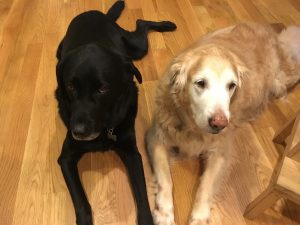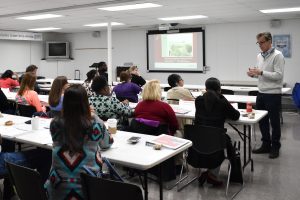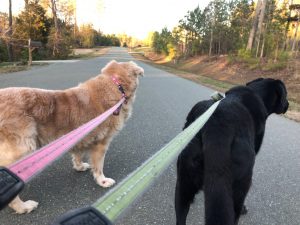Every day starts around 5 a.m. with my golden retriever Anni and her black lab mix brother (of a different mother) Owen. One of them will rise from their dog beds and walk to my side of the bed and just stand there, breathing loud enough for me to eventually hear. When they know I am awake, I next sense the gentle wap, wap, wap of their tail happily wagging against the side of the mattress. I rise slowly and make my way in the dark to my closet to dress, praying I don’t step on one of about 20 dog bones scattered throughout the house. They both follow me, anticipating one of their daily walks and knowing that breakfast can’t be far behind. Before them, I’d never had a dog, and now I can’t imagine life without them.

2/13/19 Rocky Mount, N.C. Operations Center.
Today, I taught our Customer Service 101 class to 25 customer service representatives (CSRs) and dispatch staff from our eastern North Carolina members. We started our Customer Service classes in 2015 and since then, 465 members have attended one of three classes. CSRs are the face of public power, often interacting with more customers than any other public power position. Sometimes customers can be emotional and upset about a high bill or a cut off notice, and CSRs often bear the brunt of these venting experiences. The classes are designed to help them better understand the product they sell, electricity, how customers use electricity, and how to handle challenging customer interactions.

2/15/19. Today, I distributed an email to city managers and utility directors announcing the availability of State of North Carolina grant funds that can be used to purchase electric vehicle charging stations and electric vehicles. Electric vehicles are a promising frontier for electric utilities. Public power communities have an opportunity to promote them by installing the infrastructure that will enable electric vehicle owners to charge their vehicles away from home.
2/19/19. Concord, N.C.
Today, I visited the Cannon School in Concord, N.C. to teach our E-Tracker program to Ms. Mattson’s Advanced Placement Environmental Science class. E-Tracker is designed to help high school students understand the relationship between the weather and their daily electricity use at home. To make this happen, we get them to apply the scientific method where they hypothesize what will happen, collect data by reading their home electric meters and recording high and low temperatures every day for a month, analyze the data using spreadsheet analytics including linear regression, and draw conclusions. The students also measure the electric use of at least five home appliances with a “Kill-A-Watt” meter, which we loan to them. E-Tracker actively engages students and they feel a sense of ownership in the data, and it is affirming to see them grasp the concepts we are trying to teach.
![]()
Each workday ends much like it begins — with my welcome committee of Anni and Owen who greet me with wags and licks and barks once I’m inside the front door. Now, like in the morning, they know my arrival marks another walk followed by dinner. Once we return from our walk, it’s feeding time again, followed by medicine for Owen, who has been on antibiotics for a bacterial infection for several months. Then I prepare dinner for the family, and we sit, eat, and talk about the highs and lows of our respective days.
After clearing the dishes and kitchen cleanup, there will be time for the latest binge watch on Netflix before sleep takes me over, assuredly before the end of whatever episode my wife Joy and I are watching. I’m awakened with a gentle nudge from Joy, as it is time to take the dogs out one last time. It’s something they probably don’t need to do, but a routine we started with them as puppies and one we continued to do because they/I don’t know life any other way. When we return, they head to their dog beds and it’s time to brush our teeth and get ready for bed. On the way back to the bed, I pet the dogs one last time and then head under the covers for the privilege to do it all over again.

